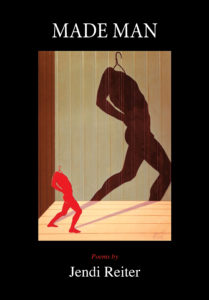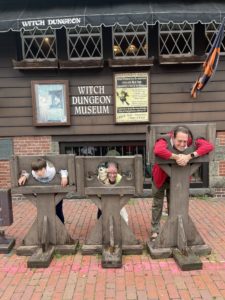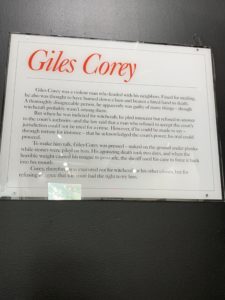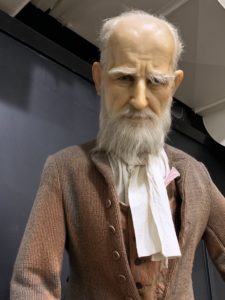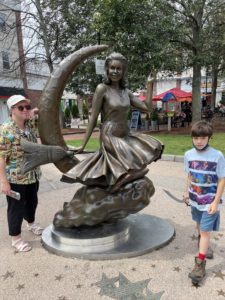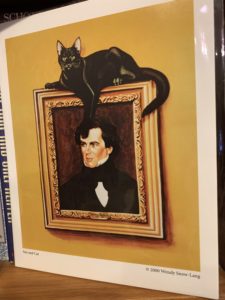Happy March–the month when, theoretically, spring will arrive, even in New England. As they say, if you don’t like the weather, wait a day. As changeable, too, are the fortunes of books. This essay by Joseph Conrad (1857-1924), reprinted in Narrative Magazine, limns the author’s destiny in terms that are simultaneously humble, noble, and humorous.
Of all the inanimate objects, of all men’s creations, books are the nearest to us, for they contain our very thought, our ambitions, our indignations, our illusions, our fidelity to truth, and our persistent leaning towards error. But most of all they resemble us in their precarious hold on life. A bridge constructed according to the rules of the art of bridge-building is certain of a long, honourable and useful career. But a book as good in its way as the bridge may perish obscurely on the very day of its birth. The art of their creators is not sufficient to give them more than a moment of life…
No secret of eternal life for our books can be found amongst the formulas of art, any more than for our bodies in a prescribed combination of drugs. This is not because some books are not worthy of enduring life, but because the formulas of art are dependent on things variable, unstable and untrustworthy; on human sympathies, on prejudices, on likes and dislikes, on the sense of virtue and the sense of propriety, on beliefs and theories that, indestructible in themselves, always change their form—often in the lifetime of one fleeting generation.
Given the fickleness and unpredictability of the literary life–like any life–Conrad advises the author to prioritize clear understanding, compassion, and the liberty of the imagination. Art is already dead when it merely serves to illustrate an ideological or aesthetic agenda.
It must not be supposed that I claim for the artist in fiction the freedom of moral Nihilism. I would require from him many acts of faith of which the first would be the cherishing of an undying hope; and hope, it will not be contested, implies all the piety of effort and renunciation. It is the God-sent form of trust in the magic force and inspiration belonging to the life of this earth. We are inclined to forget that the way of excellence is in the intellectual, as distinguished from emotional, humility. What one feels so hopelessly barren in declared pessimism is just its arrogance. It seems as if the discovery made by many men at various times that there is much evil in the world were a source of proud and unholy joy unto some of the modern writers. That frame of mind is not the proper one in which to approach seriously the art of fiction. It gives an author—goodness only knows why—an elated sense of his own superiority. And there is nothing more dangerous than such an elation to that absolute loyalty towards his feelings and sensations an author should keep hold of in his most exalted moments of creation.
To be hopeful in an artistic sense it is not necessary to think that the world is good. It is enough to believe that there is no impossibility of its being made so.
At the Southern arts and culture magazine Scalawag, poet Minnie Bruce Pratt urges us not to give up hope for the queer and leftist struggle in the South. Don’t write off the region as belonging to the right-wing racists. Like her late spouse Leslie Feinberg (Transgender Warriors), Pratt sees transformation occurring through intersectional alliances among queer, POC, and working-class people.
The South is full of our queerness—35 percent of the LGBTQ population in the U.S. lives here (the Northeast is home to only 19 percent). In the Deep South—Alabama, Mississippi, Florida, and Louisiana—almost 40 percent of us identify as people of color; In Texas that figure is over 50 percent.
Pratt shares anecdotes about political organizing and how we can learn from each other’s limited perspectives, such as her white mother who appreciated women’s gains in independence in the 1970s, but was unaware that Black activism laid the foundation for her freedoms.
In this video at Poets & Writers, Paul Tran, in a gorgeously gender-bending dress, reads “Copernicus” from their new poetry collection All the Flowers Kneeling (Penguin Books). Read more of their work at the Poetry Foundation website. From “Endosymbiosis” (a word that means one organism living inside another):
It wasn’t himbut what he didthat lived oninside me.I had tolearn that.I had tocleave actionfrom figure,the verb dofrom the noun doll…
